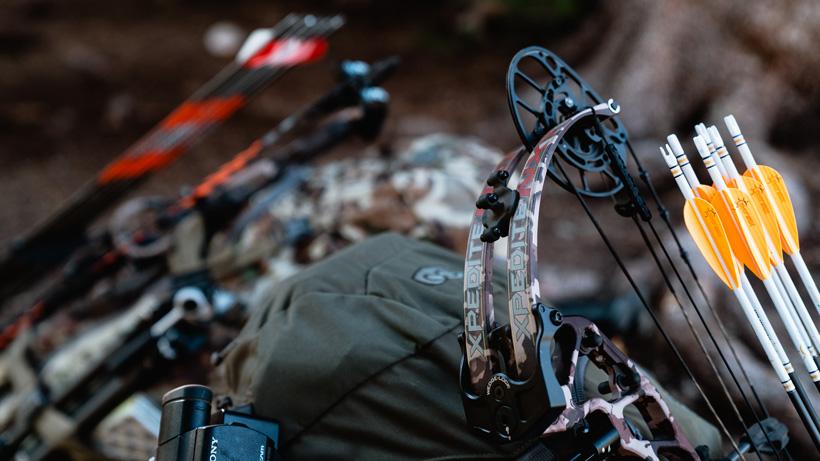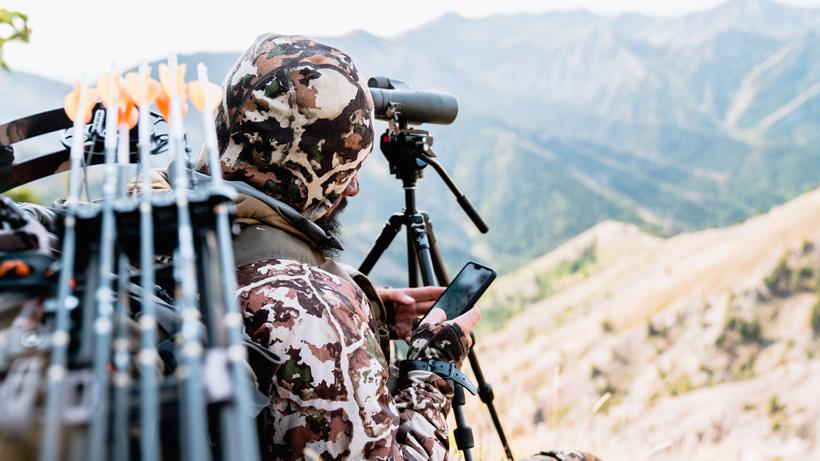







All photo credit: Josh Kirchner
If you’ve spent any good amount of time shooting a bow, you know how absolutely infuriating shooting in the wind can be. Sight pins dance around like a pinball hitting all sides of the target and our blood boils from frustration. This is not the time to try and sight in a bow. However, as painstaking as it can be, shooting in the wind is a very necessary skill for a bowhunter. Things are rarely perfect in the field and wind is a common obstacle you’ll encounter. So, in order to be as ready as we can be, knowing how to shoot in the wind is a must. Here’s a few things to keep in mind the next time the wind blows.
In general, I’m a huge fan of just leaving my quiver on at all times. In fact, I think it’s rather silly to practice without a quiver because we hunt with our quivers on. For the most part, at least. There are plenty of folks out there who take their quivers off when in the stand, blind or even on stalks. Wind is a great reason to take off a quiver as well. Quivers actually act as a sail. They have a knack for catching the wind and blowing you right off target and the difference in feel at full draw is quite dramatic. By taking off your quiver, you’ll open up a whole lot of space for air flow through your bow. The result is less pin movement on target, which translates right into better shooting. Just know where your arrows are and keep them at the ready. You never know when you’ll have to make a follow up shot in the field.
Most bow sights these days have a bubble level on them. These are there to ensure that we are holding perfectly level at full draw. This is known as your second axis and is something that needs to be set up properly beforehand. By not holding level, we will experience left/right variances in impact points. If the bow is canted/tilted to the right when the shot breaks, the arrow will go right. If the bow is canted/tilted to the left, the arrow will go left. It’s all because of the natural arc of the arrow in flight. By offsetting that arc, you’ll push the arrow one way or another. This is valuable intel when it comes time to shooting in the wind.
One of the most frustrating parts about shooting in the wind besides pin movement is the wind can carry arrows off center a bit. Obviously, that varies based upon how strong the wind is, but it’s true nonetheless. We can use canting to mitigate these variances. If you’re fighting a left to right wind, try tilting your bow a bit into the wind (left). This will change the flight path of your arrow and push it to the left. The beauty about doing this is you’ll still be able to hold right on target. There is no eye balling how much to aim off center. Instead you’ll be pushing the arc of your arrow into the wind and, by doing so, mitigate the effects the wind has downrange. Keep in mind that there is a fair amount of experimentation that needs to happen here before taking this into the field and applying it to an animal. Knowing how much to tilt that bubble off center is vital for a well placed shot. Don’t disregard that.
A few years back, I finally pulled the trigger on the carbon bow I had been wanting. Being a backpack hunter, the weight savings was very appealing to me as was just the overall aesthetics of the bow. It was a smoker! The bow shot fantastic until the wind started to blow. Right then and there, I had a “What did I do?” moment. Because it was more lightweight, the wind had an even greater effect on it.
The story of the three little pigs is a fantastic analogy here. Out of the three houses built, the big bad wolf blows down only two of them: the ones made from straw and sticks. The lesson learned is that lightweight houses couldn’t handle the wind. The last house being made of brick, though? That didn’t budge. Sorry if I ruined that story for you, but the same thinking can be applied to our bows.
By applying more weight to our bows, they will stand up much better to the effects of the wind. This could mean switching from a carbon to an aluminum bow, which is what I did, or simply adding weight to our stabilizer. Either way, the goal is more weight. The same can be said for arrows. A heavier arrow has more wind resistance than a lighter one. The point is that no matter what type of bow or arrow, we need to create a more sturdy platform. By doing so, our pins will be dancing around much less on the target. These results will carry right into normal shooting as well, not just for windy days.
Before folks start going out and trying to create anchor-like bows, I want to say something. Yes, shooting in the wind is frustrating. And, yes, there are things we can do to our bows and arrows to mitigate the effects it has. However, never ever sacrifice performance in the name of trying to buck the wind. For stabilizers, make sure you’re not adding so much weight that your bow is suddenly imbalanced or it’s a pain in the neck carrying it around. The same goes for arrows. Don’t shoot something so heavy that it has negative effects on arrow flight or stretches your pin gapping from here to the moon. Find a happy medium.
While we are out there sending arrows into the wind, it’s important that we be honest with ourselves. It’s a time when we need to reevaluate our shooting. We all have an effective shooting range, but that range decreases when the wind is gusting. So, what is that distance? That’s something you need to find out for yourself. Time on the range is the only solution. For me, my effective shooting range decreases by about 20 yards. As hard as it may be for our egos to swallow, this is valuable info once in the field. It’ll remind us to try and just get closer to that animal. Remember: bowhunting is about getting close. The good news is that wind is quite beneficial to do that. The noise created by the wind will cover up the noise of an approach, giving you that window you need.
For years I would not shoot my bow when the wind was howling outside. I didn’t like not being as accurate. Shooting in the wind, though, is all part of bowhunting. I was doing myself a disservice by not figuring out ways to make it work or at least ways to make it work better. We are as strong as our weakest link and while it may not be too fun, taking on the frustrating task of learning to shoot in the wind will make us stronger and more effective in the field. It’s another tool in the toolbox.
Practicing the things we don’t like to practice are often the very things that make us that much better.